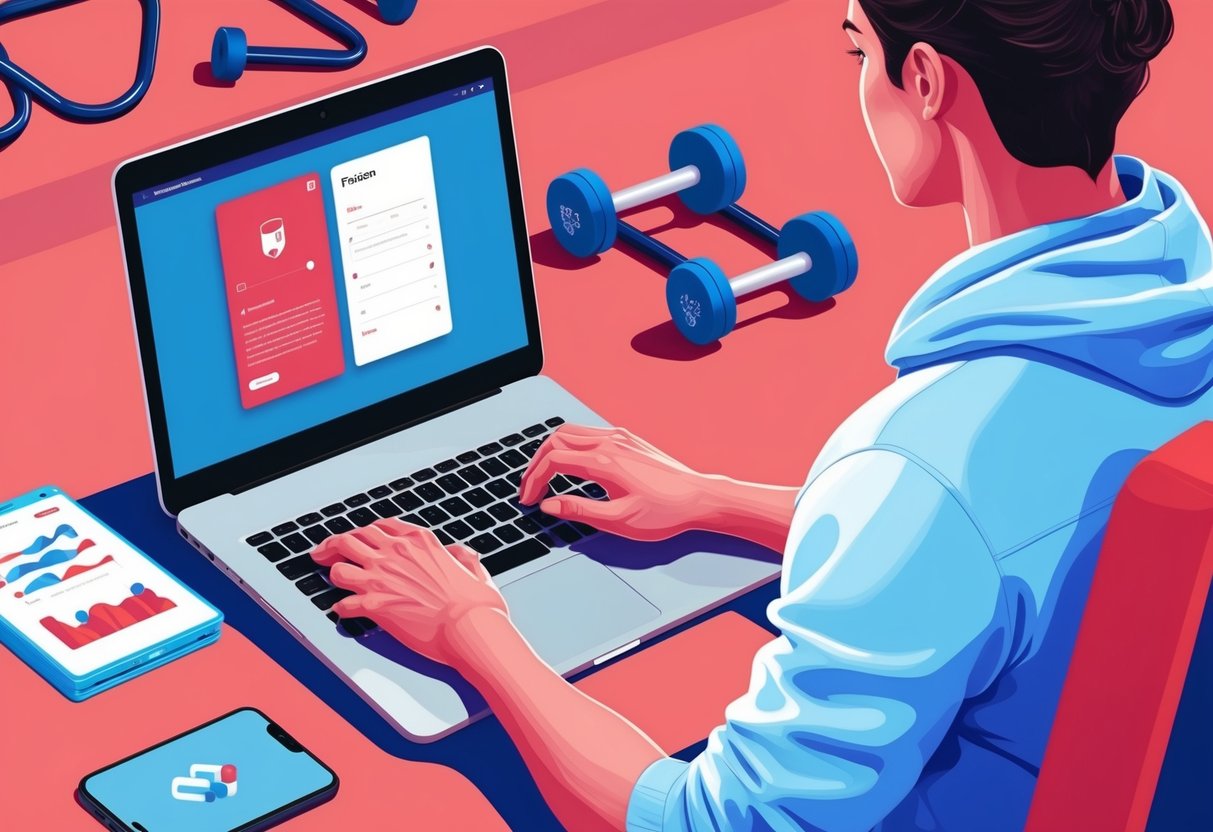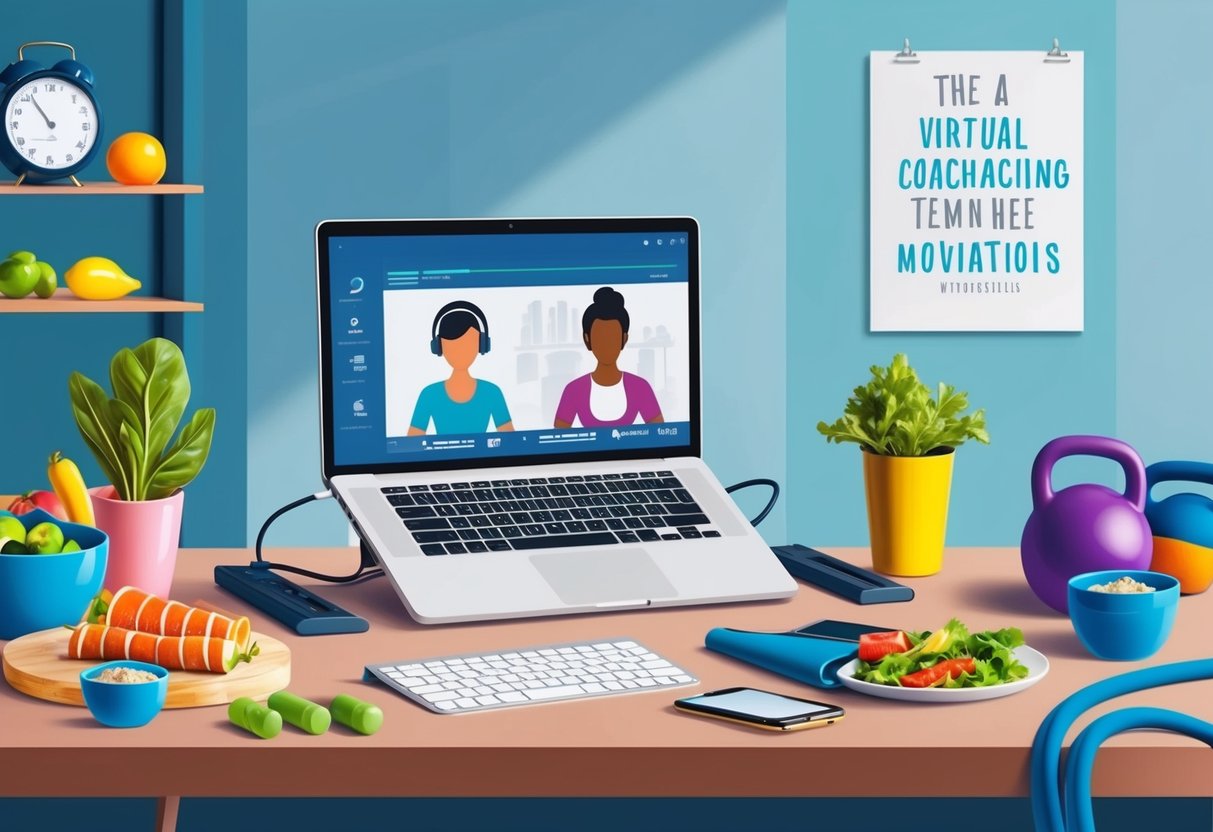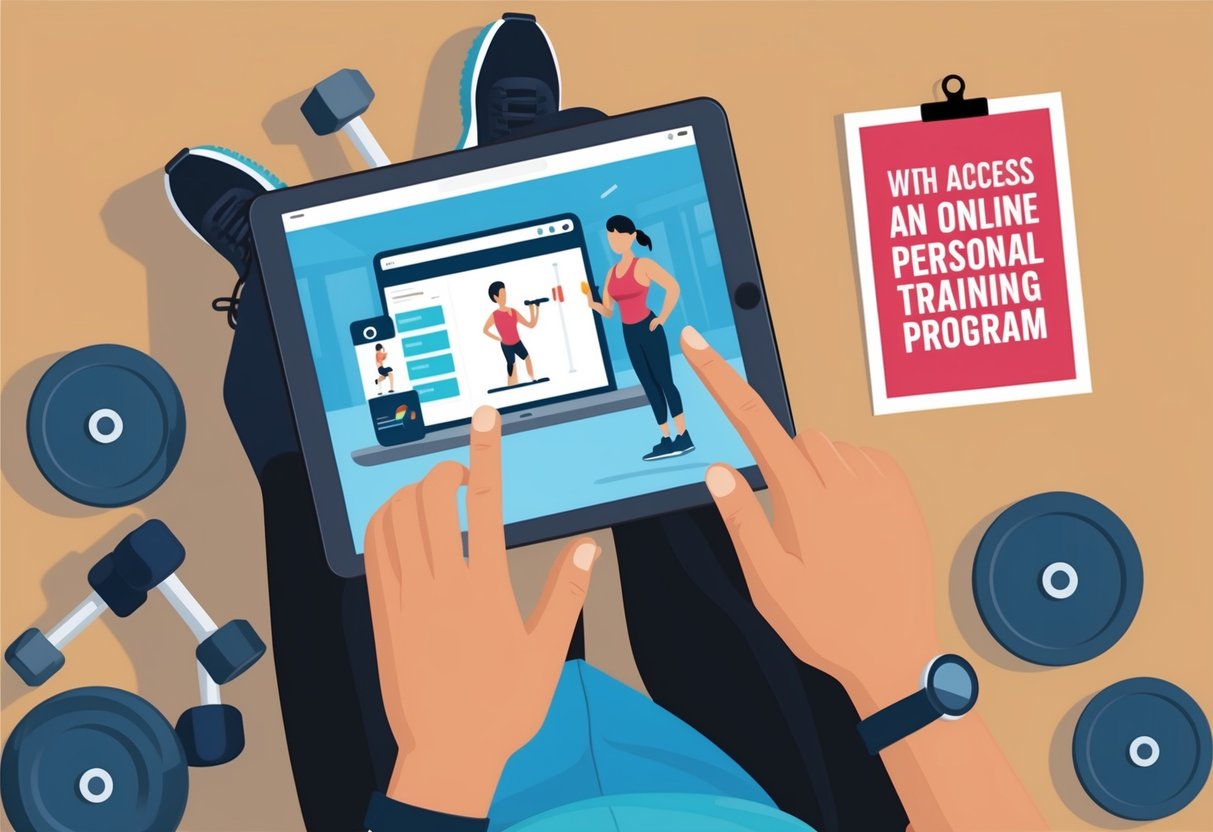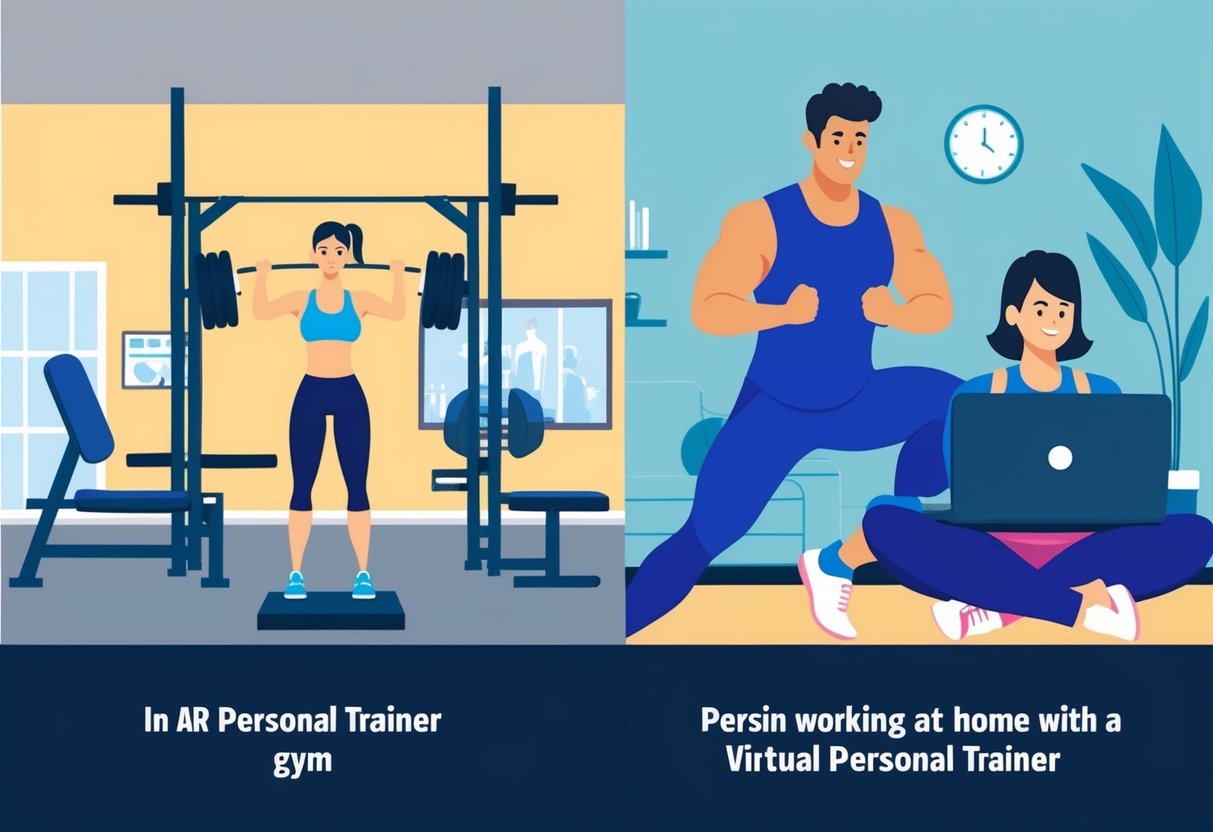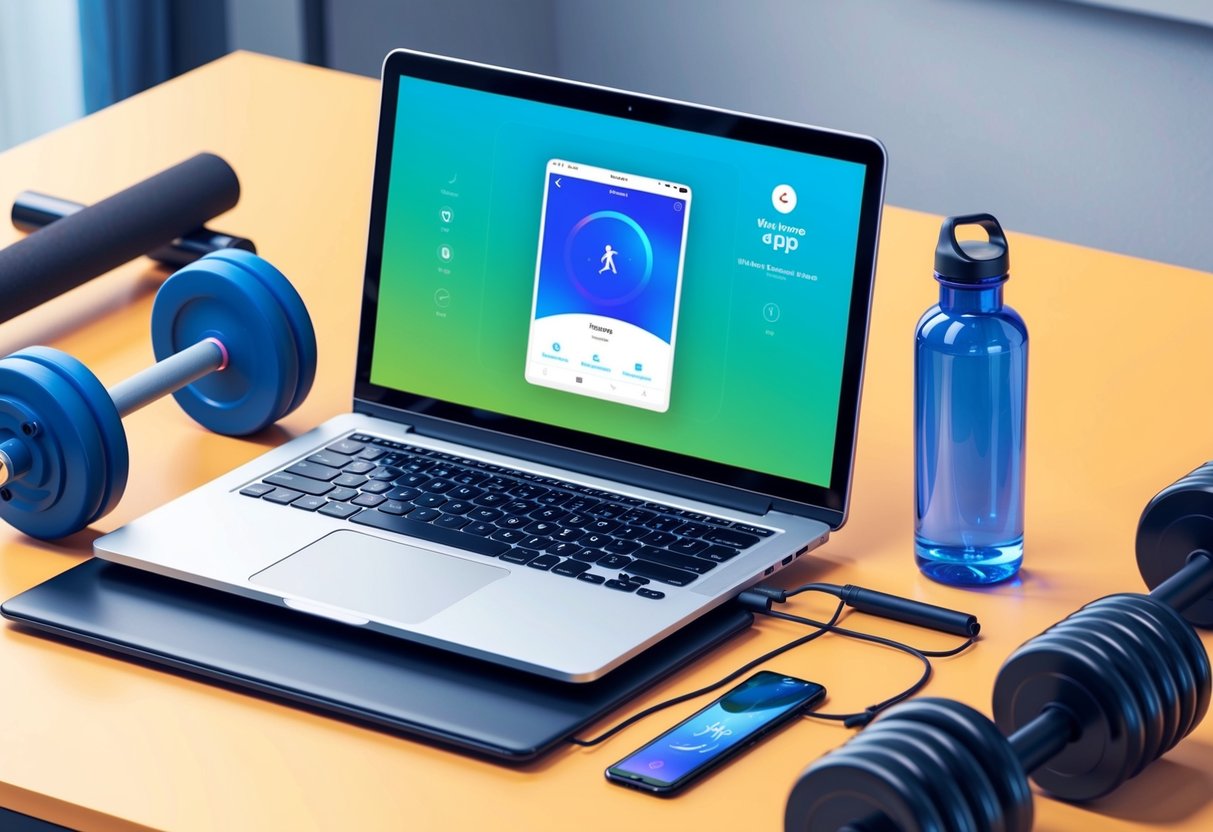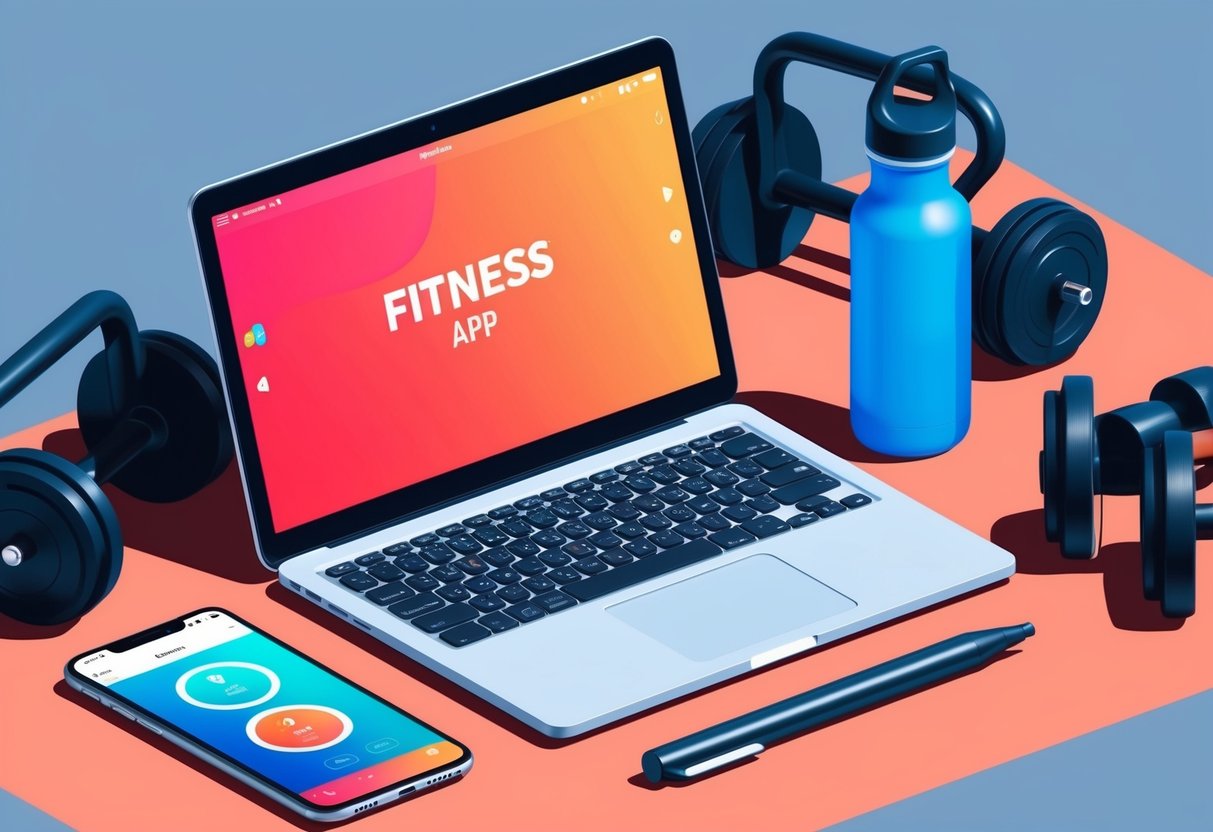Online personal training has revolutionized the fitness industry. It offers a flexible and accessible approach to achieving your health goals. You can now access expert guidance and personalized workout plans from the comfort of your home or any location with an internet connection.

Online personal training can be an excellent choice if you value convenience, flexibility, and personalized attention without the constraints of a traditional gym setting. It allows you to work with experienced trainers regardless of geographical limitations, often at a more affordable price point than in-person sessions.
This approach suits individuals with busy schedules, those who prefer working out at home, or anyone seeking a tailored fitness program that adapts to their lifestyle.
You’ll have access to your trainer’s expertise through various digital platforms, enabling continuous support and adjustments to your plan as needed.
Popular Posts
- Massage Gun vs. Foam Roller: Which Recovery Tool Reigns Supreme?
- 27 Best Calisthenics Exercises for Full-Body Strength and Fitness
- 10 HIIT Workouts for Busy Professionals: Max Fitness, Min Time
- Good Posture Working from Home: Optimize Your Workspace to Prevent Discomfort and Health Issues
- The Best Crossfit Exercises for Full-Body Conditioning
Key Takeaways
- Online personal training offers flexibility and expert guidance from anywhere
- It’s ideal for busy individuals or those preferring home workouts
- Digital tools provide continuous support and plan adjustments
Benefits of Online Personal Training

Online personal training offers several advantages that make it an attractive option for many fitness enthusiasts. It combines technology with expert guidance to provide a convenient and effective workout experience.
Convenience and Flexibility
You can access your workouts anytime, anywhere with online personal training. No need to commute to a gym or schedule around limited time slots.
Your virtual trainer is available on your schedule, whether that’s early morning or late at night.
Online platforms often provide workout libraries, allowing you to choose exercises that fit your current mood or energy level.
This flexibility helps you maintain consistency in your fitness routine, even with a busy lifestyle.
Many apps offer offline access to workouts, perfect for when you’re traveling or have limited internet connectivity. You can easily squeeze in a quick session during lunch breaks or while waiting for appointments.
Access to Expertise and Variety of Trainers
Online personal training connects you with top-notch trainers from around the world. You’re not limited to local options, opening up a vast pool of expertise and specialties.
You can find trainers who specialize in your specific goals, whether that’s weight loss, muscle gain, or sports performance.
This targeted approach ensures you’re working with someone who truly understands your needs.
Many platforms allow you to switch trainers easily if you want to try different styles or techniques.
This variety keeps your workouts fresh and engaging, reducing the risk of boredom or plateaus.
Customization and Personalization
Despite being virtual, online personal training can be highly personalized. Your trainer can create customized workout plans based on your goals, fitness level, and available equipment.
Many online platforms use algorithms and AI to adapt your workouts in real-time based on your progress and feedback.
This ensures your program evolves as you do, continuously challenging you.
You can often communicate with your trainer through messaging or video calls, allowing for quick form checks or motivational boosts.
This ongoing support helps you stay accountable and motivated.
Incorporating Technology
Online personal training leverages technology to enhance your fitness journey.
Many apps offer features like progress tracking, workout logging, and performance analytics.
Wearable devices can be integrated with your training program, providing valuable data on your heart rate, calories burned, and recovery needs.
This information helps your trainer fine-tune your workouts for optimal results.
Virtual reality and augmented reality are emerging technologies in the fitness industry, offering immersive workout experiences.
These innovations can make your at-home workouts feel more engaging and interactive.
Some platforms use AI to provide real-time form corrections and exercise demonstrations, ensuring you perform movements safely and effectively even without in-person supervision.
Determining Your Fitness Goals
Setting clear fitness objectives and identifying preferred workout types are crucial steps in your online personal training journey. These elements will shape your program and drive your progress.
Establishing Clear Objectives
Start by defining specific, measurable goals. Do you want to lose weight, build muscle, or improve your cardiovascular health?
Set targets like “lose 10 pounds in 3 months” or “run a 5K in under 30 minutes.”
Consider your current fitness level and be realistic about what you can achieve.
Short-term goals provide motivation, while long-term goals give direction.
Write down your objectives and review them regularly. This helps you stay focused and track your progress over time.
Identifying Preferred Workout Types
Explore different workout styles to find what you enjoy.
Strength training builds muscle and boosts metabolism. Options include weightlifting, resistance bands, or bodyweight exercises.
Cardio workouts improve heart health and burn calories. You might prefer running, cycling, swimming, or high-intensity interval training (HIIT).
For weight loss, combine cardio and strength training. Bodyweight workouts are versatile and require minimal equipment.
Try various activities to discover what keeps you engaged.
Your online trainer can tailor workouts to your preferences, ensuring you stay motivated and consistent.
Choosing the Right Online Personal Trainer
Selecting an online personal trainer requires careful consideration of their qualifications and how well they match your needs. Look for someone with proper credentials and a training style that aligns with your preferences.
Certifications and Specializations
When choosing an online personal trainer, verify their certifications.
Reputable organizations like ACE, NASM, and ISSA offer widely recognized personal training certifications. These ensure your trainer has a solid foundation in exercise science and safety protocols.
Look for specializations that match your goals. Some trainers focus on weight loss, while others excel in strength training or rehabilitation.
Check if they have additional certifications in areas like nutrition or specific fitness modalities.
Experience matters too. Ask about their track record with clients similar to you. A trainer who has successfully helped others achieve your desired outcomes may be a good fit.
Compatibility and Coaching Style
Your online personal trainer’s communication style should resonate with you.
Some trainers adopt a drill sergeant approach, while others are more nurturing. Consider which style motivates you best.
Ask for a consultation call before committing. This allows you to gauge their personality and determine if you’ll work well together.
Discuss their coaching methods and how they plan to keep you accountable remotely.
Inquire about their availability and response times.
Prompt feedback is crucial for online training success. Make sure their schedule aligns with yours for virtual sessions or check-ins.
Consider their technological proficiency too. A good online trainer should be comfortable with video calls, fitness apps, and digital workout plans.
This ensures smooth communication and effective remote guidance.
Understanding Online Training Programs
Online training programs offer flexibility and personalized guidance for fitness enthusiasts. They come in various formats to suit different goals and preferences.
Structured Programs Versus Custom Plans
Structured programs provide pre-designed workout routines for specific goals like weight loss or muscle gain. These often follow a set schedule and progression.
Custom plans, on the other hand, are tailored to your individual needs and preferences.
Many online platforms offer both options.
JuggernautAI, for example, creates customized workout programs based on your fitness level and available equipment. You can choose the plan that best fits your lifestyle and objectives.
Interactive and Science-Based Features
Modern online training programs incorporate interactive elements to enhance your experience.
These may include video demonstrations, progress tracking apps, and virtual coaching sessions.
Science-based training is a key focus of many programs. They use data-driven approaches to optimize your workouts and recovery.
Some platforms employ AI algorithms to adjust your program based on your performance and feedback.
You’ll find features like exercise libraries, form check tools, and nutrition guidance in comprehensive online workout programs.
These elements aim to provide a well-rounded fitness experience, mimicking the benefits of in-person training.
Accountability and Motivation
Online personal training provides unique tools and strategies to keep you on track with your fitness goals. These digital platforms offer innovative ways to monitor your progress and connect with like-minded individuals.
Keeping Track of Progress
Online coaching platforms often include built-in tracking features. You can log your workouts, record weights lifted, and monitor your nutrition.
Many apps allow you to input body measurements and progress photos.
These digital tools make it easy to see your improvements over time.
Your online trainer can access this data to provide personalized feedback and adjustments to your program.
Some platforms use AI to analyze your progress and suggest modifications.
This real-time feedback helps you stay accountable and motivated as you see tangible results.
Building a Supportive Community
Online training often includes access to private groups or forums. These spaces allow you to connect with other clients pursuing similar goals.
You can share your successes, challenges, and questions with peers.
This sense of community can boost your motivation and provide emotional support during tough times.
Many platforms organize virtual challenges or competitions. These events can spark friendly competition and give you short-term goals to work towards.
Your online trainer may also facilitate group coaching calls.
These sessions allow you to learn from others’ experiences and receive direct guidance in a supportive environment.
Nutrition and Lifestyle Coaching
Online personal training often extends beyond workouts to provide comprehensive guidance for your overall health and wellness.
Comprehensive Fitness Approach
Online trainers recognize that fitness involves more than just exercise. They integrate nutrition and lifestyle factors into your personalized plan. This holistic approach addresses sleep, stress management, and daily habits that impact your health.
Many fitness apps now offer features to track your meals, water intake, and sleep patterns. These tools help you and your trainer identify areas for improvement.
You’ll receive tailored advice on how to optimize these aspects of your life to support your fitness goals.
Personalized Nutrition Advice
Your online trainer can provide customized nutrition guidance based on your specific needs and goals. They may suggest meal plans, recipes, or general eating strategies that align with your fitness objectives.
Some platforms offer integration with nutrition apps, allowing you to easily log your food intake. Your trainer can then review this data and offer feedback.
They might recommend adjustments to your macronutrient balance, portion sizes, or meal timing.
Nutrition coaching through online platforms often includes educational resources. You’ll learn about proper fueling for workouts, healthy food choices, and strategies for long-term dietary success.
The Role of Digital Tools in Training
Digital tools have revolutionized personal training, offering advanced tracking capabilities and personalized guidance. These technologies enhance the training experience and provide valuable insights into your fitness journey.
Fitness Tracking and Analysis
Fitness trackers like Fitbit have become essential companions for many exercisers.
These devices monitor your heart rate, steps taken, and calories burned throughout the day. They also track your sleep patterns, providing a comprehensive view of your overall health.
Some trackers offer GPS functionality, allowing you to map your runs or cycling routes. This feature helps you analyze your pace and distance covered.
Apps like Joggo and Copilot use the data from these devices to create tailored workout plans. They adjust your program based on your progress and goals, ensuring you’re always challenged but not overwhelmed.
User Experience with Fitness Technology
Fitness apps like Aaptiv and Down Dog have made workouts more accessible and engaging. These platforms offer guided audio and video sessions, bringing expert instruction to your home or gym.
You can choose from a variety of workout styles, difficulty levels, and durations. This flexibility allows you to maintain your routine even when traveling or pressed for time.
Many apps integrate social features, letting you connect with friends or join virtual communities. This aspect can boost motivation and accountability in your fitness journey.
Regular software updates ensure that these tools continue to improve, often adding new features or refining existing ones based on user feedback.
Advantages of In-Person vs. Online Training
In-person training offers unique benefits that online options can’t fully replicate. You get immediate feedback on your form and technique during exercises. This hands-on guidance helps prevent injuries and maximizes workout effectiveness.
Face-to-face interactions allow trainers to pick up on subtle cues about your energy levels and motivation.
They can adjust your session accordingly, pushing you when needed or scaling back if you’re fatigued.
Gyms provide specialized equipment that may not be available at home. This variety enables more diverse workouts and can target specific muscle groups more effectively.
Online training shines in convenience and flexibility. You can work out on your own schedule without commuting to a gym. This saves time and makes it easier to maintain consistency in your fitness routine.
Virtual sessions often cost less than in-person training. You can access expert guidance at a more affordable price point, making professional fitness support accessible to a wider audience.
Online platforms frequently offer extensive libraries of workout videos and resources. This gives you the freedom to explore different exercise styles and intensities at your own pace.
Privacy is enhanced with online training. You can exercise in the comfort of your home without feeling self-conscious about others watching you work out.
| Aspect | In-Person | Online |
|---|---|---|
| Form correction | Immediate | Delayed or limited |
| Equipment access | Extensive | Limited to home gear |
| Flexibility | Fixed schedule | Anytime workouts |
| Cost | Higher | Generally lower |
| Privacy | Gym environment | Home comfort |
Potential Drawbacks of Online Personal Training
While online personal training offers many benefits, it comes with some challenges. You should carefully consider these potential drawbacks before committing to a virtual fitness program.
Challenges in Self-Discipline
Online training requires significant self-motivation. Without a trainer physically present, you might struggle to stay accountable.
It’s easier to skip workouts or cut them short when no one is watching.
You’ll need to set your own schedule and stick to it. This can be difficult if you’re not naturally disciplined or have a busy lifestyle.
Some people find it harder to push themselves without in-person encouragement. You might not achieve the same intensity in your workouts as you would with a trainer by your side.
Technological Limitations and Learning Curve
Online training relies heavily on technology. You’ll need a reliable internet connection and compatible devices.
Technical issues can disrupt your sessions or hinder communication with your trainer.
Learning to use new fitness apps or video platforms may be challenging, especially if you’re not tech-savvy.
This learning curve can be frustrating and time-consuming.
Video quality might affect your trainer’s ability to assess your form accurately. This could lead to improper technique and potential injuries if not addressed promptly.
Limited Human Interaction
Virtual training lacks the personal touch of face-to-face sessions. You miss out on the energy and motivation that comes from working out alongside others.
Non-verbal cues and hands-on adjustments are limited in online settings. Your trainer can’t physically guide you through movements or correct your posture directly.
Building a strong rapport with your virtual trainer may take longer. The absence of in-person interaction can make it harder to establish trust and a personal connection.
Maximizing Your Online Training Experience
Online personal training offers flexibility and convenience. With the right approach, you can achieve outstanding results from the comfort of your own space.
Creating an Effective Workout Environment
Set up a dedicated area for your workouts. Clear clutter and ensure you have enough room to move freely.
Invest in essential equipment like resistance bands, dumbbells, or a yoga mat.
Good lighting and ventilation are crucial for a comfortable exercise space. Consider adding a mirror to check your form during exercises.
Keep your workout area organized. Store equipment neatly when not in use. A tidy space can boost your motivation and make it easier to start each session.
Harnessing the Power of Routine
Consistency is key in online training. Establish a regular workout schedule that fits your lifestyle. Stick to specific days and times for your sessions.
Set reminders on your phone or calendar to stay on track. Treat your workouts like important appointments you can’t miss.
Prepare your workout clothes and equipment in advance. This small step can reduce barriers to getting started and help you maintain your routine.
Leveraging Resources for Optimal Results
Take full advantage of the resources provided by your online trainer.
This may include personalized workout plans, instructional videos, or nutrition guides.
Use fitness apps to track your progress. Many platforms offer features like workout logging, progress photos, and performance metrics.
Connect with your trainer regularly through video calls or messaging. Don’t hesitate to ask questions or request form checks to ensure you’re performing exercises correctly.
Explore additional online resources like exercise libraries or nutrition calculators. These tools can complement your trainer’s guidance and enhance your overall fitness journey.
Frequently Asked Questions
Online personal training raises some common questions about cost, effectiveness, and what to expect. Let’s address the key points clients often wonder about.
What should you consider before signing up for online personal training?
Evaluate your fitness goals and schedule flexibility. Assess your self-motivation level and ability to follow instructions remotely.
Check your access to necessary equipment and technology for virtual sessions.
Consider your learning style and whether you prefer in-person guidance. Review the trainer’s qualifications and experience with online coaching.
How does the cost of online personal training compare to in-person coaching?
Online training typically costs less than in-person sessions.
You save on gym fees and travel expenses. Trainers can offer lower rates due to reduced overhead costs.
Some online programs provide group sessions at even more affordable prices. However, premium one-on-one virtual coaching can still be relatively expensive.
What are the potential drawbacks of participating in online fitness classes?
Limited personal attention in larger group settings can be a challenge. Technical issues like poor internet connection may disrupt your workout.
You might miss out on hands-on form corrections and immediate feedback. Some people find it harder to stay motivated without in-person interactions.
Can online personal trainers provide effective weight loss coaching?
Yes, online trainers can offer successful weight loss programs.
They create customized workout plans and provide nutritional guidance remotely.
Regular check-ins and progress tracking help keep you accountable. Many clients achieve significant results with virtual weight loss coaching.
What can clients typically expect from an online personal training program?
You’ll receive personalized workout plans tailored to your goals. Trainers often provide video demonstrations of exercises and technique tips.
Regular virtual check-ins and progress assessments are common. You may have access to a mobile app for tracking workouts and communicating with your trainer.
How do online personal training and nutrition services integrate for holistic wellness?
Many online trainers offer combined fitness and nutrition coaching. They create meal plans that complement your workout regimen.
You might track your food intake through an app. Then, you can share the data with your trainer. This integrated approach helps optimize your overall health and fitness progress.



